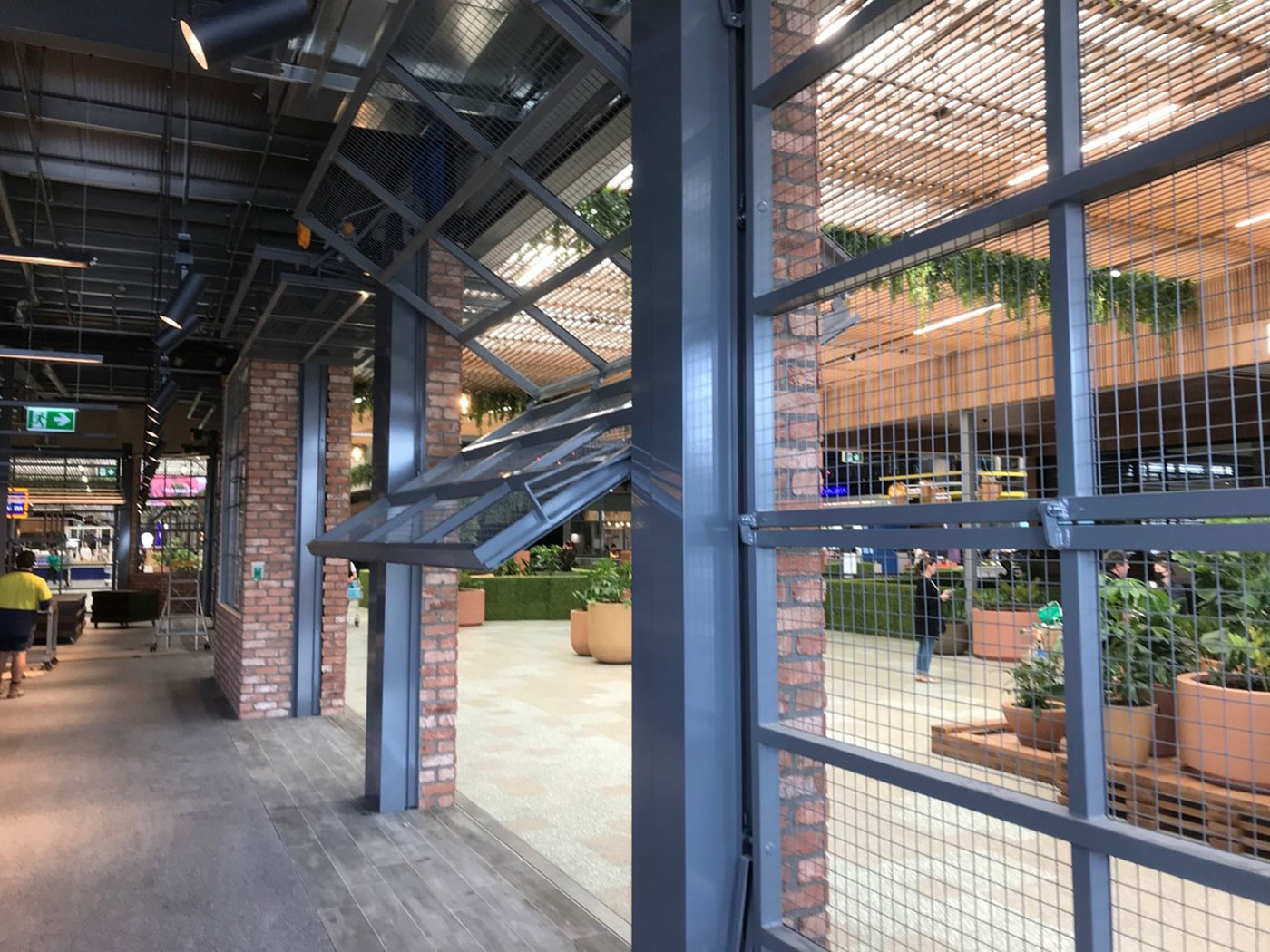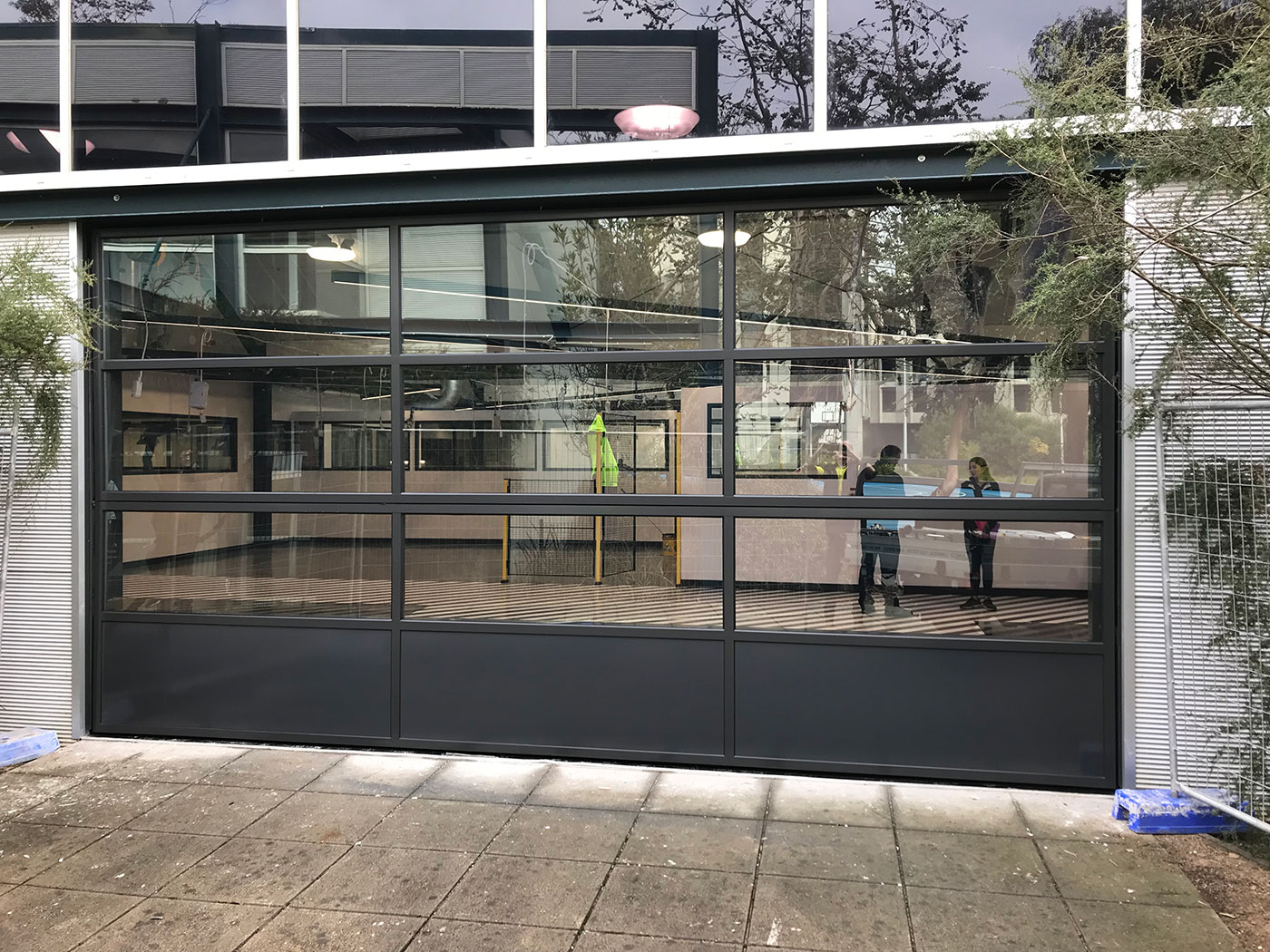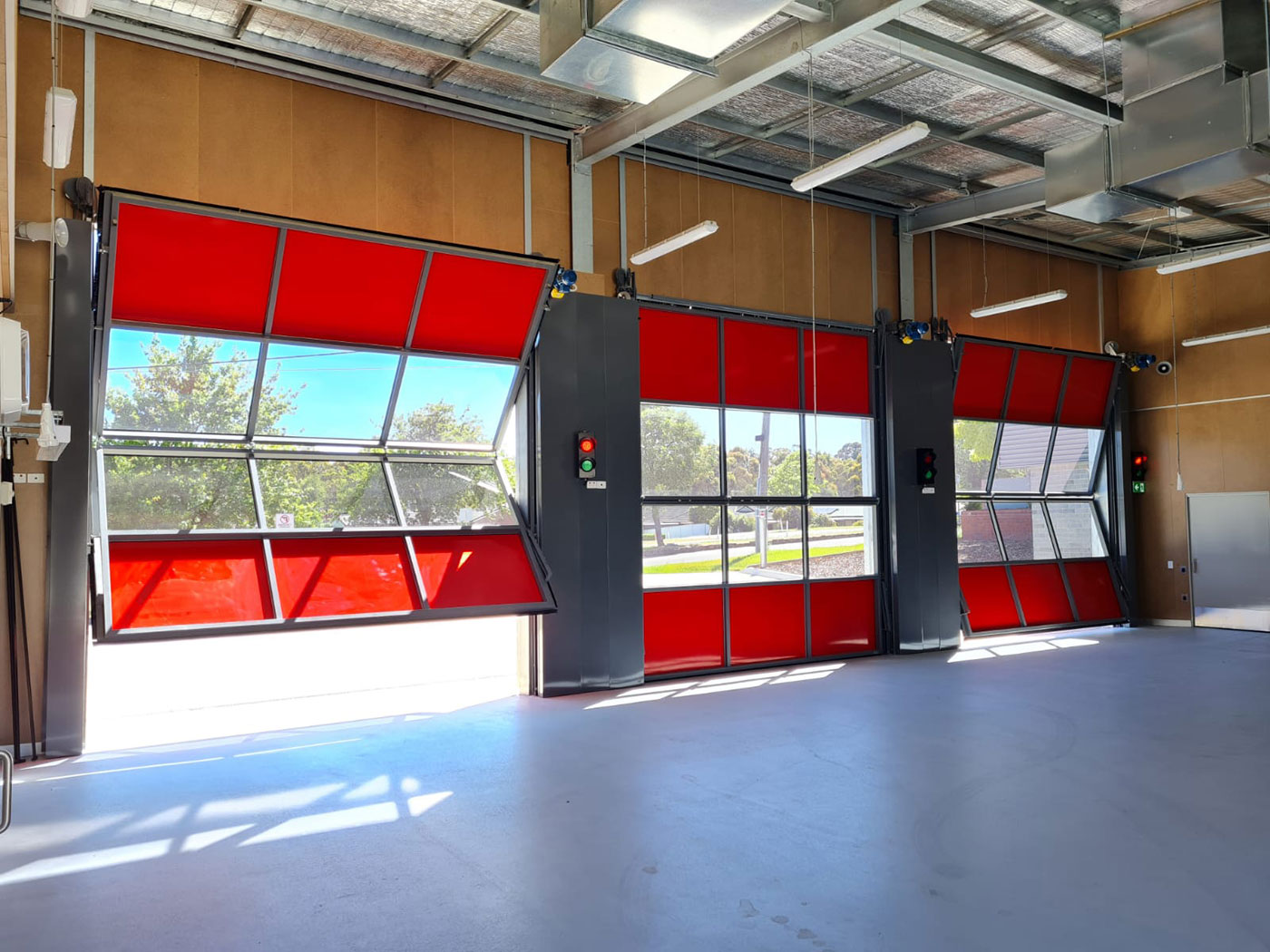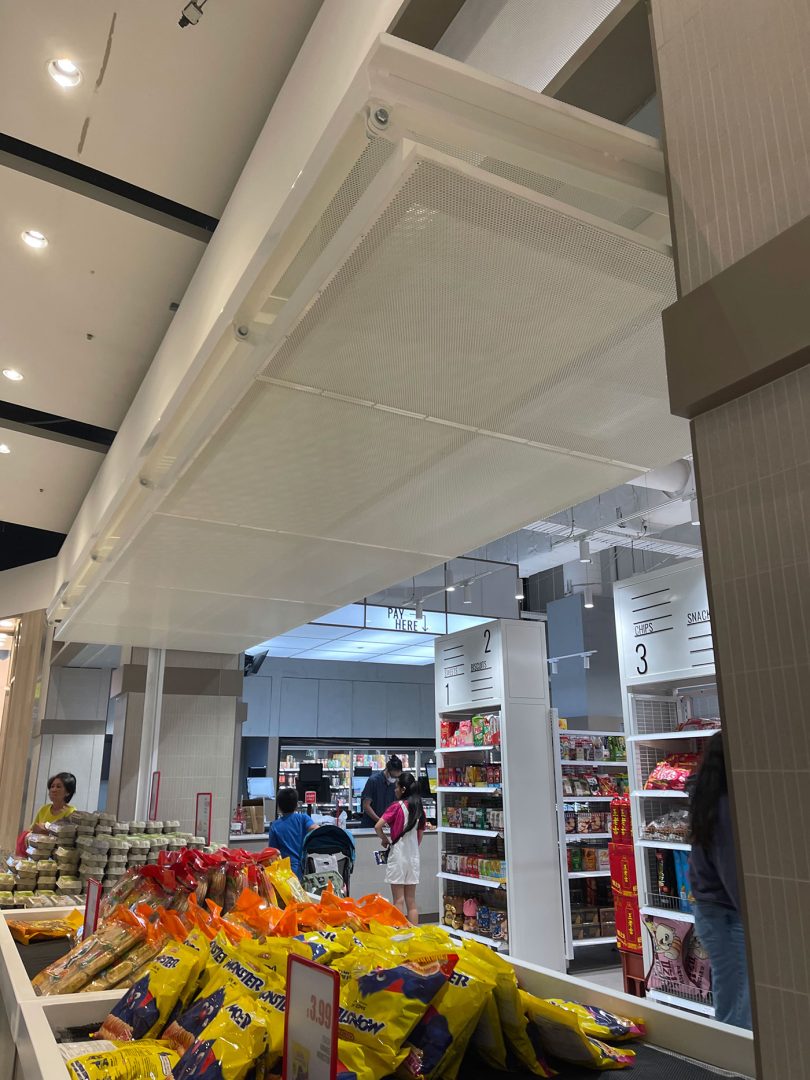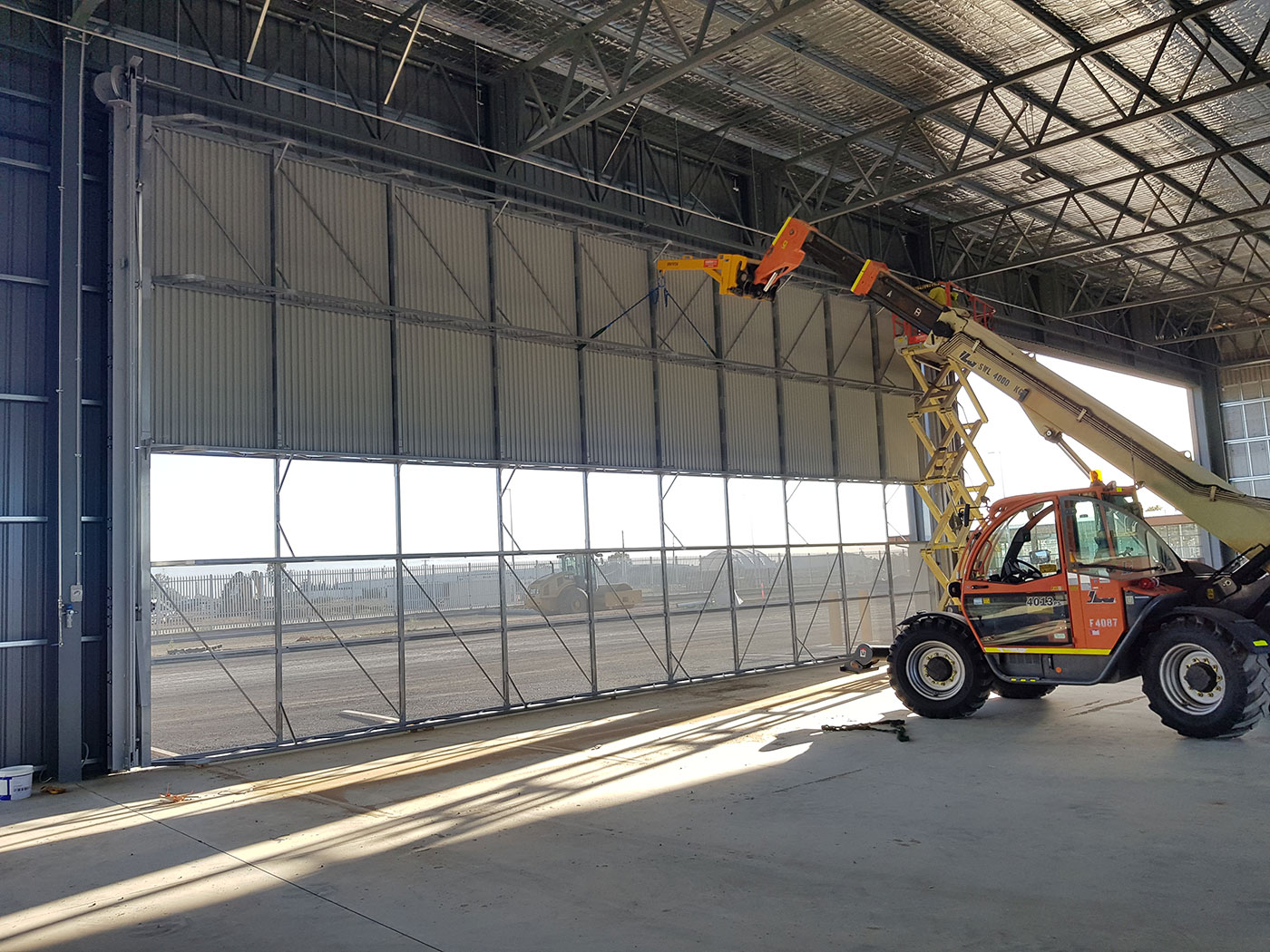The Bi-Fold has two leaves that are hinged together at approximately mid opening height. When opening the leaves fold together coming to rest, horizontally, directly beneath the lintel. The folded/open door projects approximately one quarter of the door (height) externally and one quarter internally.
The Bi-Fold is most suited to large openings where tall vehicle access is required. Fire-stations and Ambulance-stations frequently have Bi-Fold installed.
Even with two leaves, the counterweight balanced Bi-Fold has few moving parts. Architectural aesthetics, reliability and long service life make this our most popular product for commercial vehicle access.



